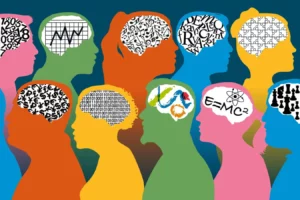
The Future of Agent-centric Architecture: Overcoming API Barriers
As AI technology continues to advance, the importance of agent-centric architecture has become increasingly apparent. However, this shift also poses significant challenges for organizations looking to unlock the full potential of autonomous agents. One major obstacle is the existing API landscape, which creates a bottleneck in the development and deployment of agentic workflows.
The limitations of traditional APIs
Traditional APIs are not designed with the needs of agent-centric architecture in mind. Their discoverability limits an agent’s ability to navigate new environments and solve problems without human intervention. Inconsistent interfaces further complicate matters. This lack of standardization leads to frustratingly complex integration processes, hindering the widespread adoption of AI-powered systems.
Why standardized protocols matter
To overcome these limitations, organizations must adopt a standardized approach to API interaction. Standardized action protocols provide structured frameworks that enable AI agents to:
* Discover available actions in any compatible system
* Understand parameters and requirements for these actions
* Execute actions securely and reliably
* Receive and process responses in standardized formats
Several promising protocols have emerged to address these needs, including the Model Context Protocol (MCP), Unified Intent Mediator (UIM) Protocol, agents.json, Open Voice Network, and more.
Benefits of adopting standardized protocols
By embracing standardized protocols, organizations can:
* Enhance discoverability: Discovery endpoints make services easily accessible to AI agents, expanding their reach beyond human developers.
* Reduce integration overhead: Standardized protocols eliminate the need for custom integration, significantly cutting development time and maintenance costs.
* Improve security and governance: Protocols like UIM enforce structured permissions, prohibitions, and obligations, ensuring secure, well-governed AI-agent interactions while preventing unauthorized access.
Future-proofing
By adopting standardized protocols early on, organizations can future-proof their infrastructure. This allows them to adapt seamlessly as the landscape evolves and new use cases emerge. Organizations that fail to adopt these standards risk obsolescence in an increasingly agent-driven ecosystem.
Implementing protocol-based API discovery
To successfully integrate AI agents into existing systems, organizations should follow these steps:
1. Conduct an API inventory: Catalog existing APIs and assess their compatibility with agent-oriented protocols.
2. Evaluate protocol options: Consider factors like statefulness, complexity, and community adoption when selecting a standardized protocol for integration.
3. Start with high-value, low-risk integrations: Build organizational experience and demonstrate the value of standardized protocols through early implementations.
4. Maintain governance: Ensure appropriate security, compliance, and permission controls are established and maintained throughout the transition.
Conclusion
As autonomous agents become increasingly sophisticated, their ability to discover and interact with external systems will become crucial. By adopting standardized action protocols, organizations can unlock the full potential of AI-driven workflows. Those that fail to adapt risk being left behind in an agentic landscape.
Source: https://www.forbes.com/councils/forbestechcouncil/2025/04/10/the-future-of-agentic-architecture-moving-beyond-api-bottlenecks/


